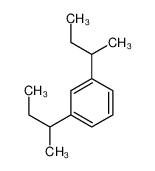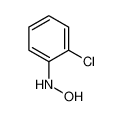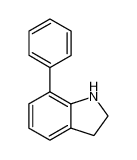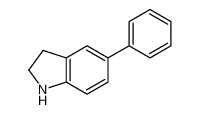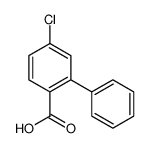1.Identification
1.1 GHS Product identifier
| Product name | benzene |
|---|
1.2 Other means of identification
| Product number | - |
|---|---|
| Other names | Benzole |
1.3 Recommended use of the chemical and restrictions on use
| Identified uses | For industry use only. Hydrocarbons (contain hydrogen and carbon atoms), Volatile organic compounds |
|---|---|
| Uses advised against | no data available |
1.4 Supplier's details
| Company | MOLBASE (Shanghai) Biotechnology Co., Ltd. |
|---|---|
| Address | Floor 4 & 5, Building 12, No. 1001 North Qinzhou Road, Xuhui District, Shanghai, China |
| Telephone | +86(21)64956998 |
| Fax | +86(21)54365166 |
1.5 Emergency phone number
| Emergency phone number | +86-400-6021-666 |
|---|---|
| Service hours | Monday to Friday, 9am-5pm (Standard time zone: UTC/GMT +8 hours). |
2.Hazard identification
2.1 Classification of the substance or mixture
Flammable liquids, Category 2
Skin irritation, Category 2
Eye irritation, Category 2
Aspiration hazard, Category 1
Germ cell mutagenicity, Category 1B
Carcinogenicity, Category 1A
Specific target organ toxicity – repeated exposure, Category 1
2.2 GHS label elements, including precautionary statements
| Pictogram(s) |    |
|---|---|
| Signal word | Danger |
| Hazard statement(s) | H225 Highly flammable liquid and vapour H315 Causes skin irritation H319 Causes serious eye irritation H304 May be fatal if swallowed and enters airways H340 May cause genetic defects H350 May cause cancer |
| Precautionary statement(s) | |
| Prevention | P210 Keep away from heat, hot surfaces, sparks, open flames and other ignition sources. No smoking. P233 Keep container tightly closed. P240 Ground and bond container and receiving equipment. P241 Use explosion-proof [electrical/ventilating/lighting/...] equipment. P242 Use non-sparking tools. P243 Take action to prevent static discharges. P280 Wear protective gloves/protective clothing/eye protection/face protection. P264 Wash ... thoroughly after handling. P201 Obtain special instructions before use. P202 Do not handle until all safety precautions have been read and understood. P260 Do not breathe dust/fume/gas/mist/vapours/spray. P270 Do not eat, drink or smoke when using this product. |
| Response | P303+P361+P353 IF ON SKIN (or hair): Take off immediately all contaminated clothing. Rinse skin with water [or shower]. P370+P378 In case of fire: Use ... to extinguish. P302+P352 IF ON SKIN: Wash with plenty of water/... P321 Specific treatment (see ... on this label). P332+P313 If skin irritation occurs: Get medical advice/attention. P362+P364 Take off contaminated clothing and wash it before reuse. P305+P351+P338 IF IN EYES: Rinse cautiously with water for several minutes. Remove contact lenses, if present and easy to do. Continue rinsing. P337+P313 If eye irritation persists: Get medical advice/attention. P301+P310 IF SWALLOWED: Immediately call a POISON CENTER/doctor/… P331 Do NOT induce vomiting. P308+P313 IF exposed or concerned: Get medical advice/ attention. P314 Get medical advice/attention if you feel unwell. |
| Storage | P403+P235 Store in a well-ventilated place. Keep cool. P405 Store locked up. |
| Disposal | P501 Dispose of contents/container to ... |
2.3 Other hazards which do not result in classification
none
3.Composition/information on ingredients
3.1 Substances
| Chemical name | Common names and synonyms | CAS number | EC number | Concentration |
|---|---|---|---|---|
| benzene | benzene | 71-43-2 | none | 100% |
4.First-aid measures
4.1 Description of necessary first-aid measures
General advice
Consult a physician. Show this safety data sheet to the doctor in attendance.
If inhaled
Fresh air, rest. Refer for medical attention.
In case of skin contact
Remove contaminated clothes. Rinse skin with plenty of water or shower. Refer for medical attention .
In case of eye contact
First rinse with plenty of water for several minutes (remove contact lenses if easily possible), then refer for medical attention.
If swallowed
Rinse mouth. Do NOT induce vomiting. Refer for medical attention .
4.2 Most important symptoms/effects, acute and delayed
Dizziness, excitation, pallor, followed by flushing, weakness, headache, breathlessness, chest constriction, nausea, and vomiting. Coma and possible death. (USCG, 1999)
4.3 Indication of immediate medical attention and special treatment needed, if necessary
Immediate first aid: Ensure that adequate decontamination has been carried out. If patient is not breathing, start artificial respiration, preferably with a demand-valve resuscitator, bag-valve-mask device, or pocket mask, as trained. Perform CPR as necessary. Immediately flush contaminated eyes with gently flowing water. Do not induce vomiting. If vomiting occurs, lean patient forward or place on left side (head-down position, if possible) to maintain an open airway and prevent aspiration. Keep patient quiet and maintain normal body temperature. Obtain medical attention. /Benzene and Related Compounds/
5.Fire-fighting measures
5.1 Extinguishing media
Suitable extinguishing media
Approach fire from upwind to avoid hazardous vapors. Use water spray, dry chemical, foam, or carbon dioxide. Use water spray to keep fire-exposed containers cool.
5.2 Specific hazards arising from the chemical
Behavior in Fire: Vapor is heavier than air and may travel considerable distance to a source of ignition and flash back. (USCG, 1999)
5.3 Special protective actions for fire-fighters
Wear self-contained breathing apparatus for firefighting if necessary.
6.Accidental release measures
6.1 Personal precautions, protective equipment and emergency procedures
Use personal protective equipment. Avoid dust formation. Avoid breathing vapours, mist or gas. Ensure adequate ventilation. Evacuate personnel to safe areas. Avoid breathing dust. For personal protection see section 8.
6.2 Environmental precautions
Remove all ignition sources. Evacuate danger area! Consult an expert! Personal protection: complete protective clothing including self-contained breathing apparatus. Do NOT wash away into sewer. Do NOT let this chemical enter the environment. Collect leaking and spilled liquid in sealable containers as far as possible. Absorb remaining liquid in sand or inert absorbent. Then store and dispose of according to local regulations.
6.3 Methods and materials for containment and cleaning up
For spills on water, contain with booms or barriers, use surface acting agents to thicken spilled materials. Remove trapped materials with suction hoses.
7.Handling and storage
7.1 Precautions for safe handling
Avoid contact with skin and eyes. Avoid formation of dust and aerosols. Avoid exposure - obtain special instructions before use.Provide appropriate exhaust ventilation at places where dust is formed. For precautions see section 2.2.
7.2 Conditions for safe storage, including any incompatibilities
Fireproof. Separated from food and feedstuffs, oxidants and halogens. Store in an area without drain or sewer access.Keep in well closed containers in a cool place and away from fire.
8.Exposure controls/personal protection
8.1 Control parameters
Occupational Exposure limit values
NIOSH usually recommends that occupational exposures to carcinogens be limited to the lowest feasible concentration.
Recommended Exposure Limit: 10 Hour Time-Weighted Average: 0.1 ppm.
Recommended Exposure Limit: 15 Minute Short-Term Exposure Limit: 1 ppm.
Biological limit values
no data available
8.2 Appropriate engineering controls
Handle in accordance with good industrial hygiene and safety practice. Wash hands before breaks and at the end of workday.
8.3 Individual protection measures, such as personal protective equipment (PPE)
Eye/face protection
Safety glasses with side-shields conforming to EN166. Use equipment for eye protection tested and approved under appropriate government standards such as NIOSH (US) or EN 166(EU).
Skin protection
Wear impervious clothing. The type of protective equipment must be selected according to the concentration and amount of the dangerous substance at the specific workplace. Handle with gloves. Gloves must be inspected prior to use. Use proper glove removal technique(without touching glove's outer surface) to avoid skin contact with this product. Dispose of contaminated gloves after use in accordance with applicable laws and good laboratory practices. Wash and dry hands. The selected protective gloves have to satisfy the specifications of EU Directive 89/686/EEC and the standard EN 374 derived from it.
Respiratory protection
Wear dust mask when handling large quantities.
Thermal hazards
no data available
9.Physical and chemical properties
| Physical state | clear colorless liquid with a petroleum-like odor |
|---|---|
| Colour | Clear, colorless liquid |
| Odour | Aromatic odor |
| Melting point/ freezing point | -11°C(lit.) |
| Boiling point or initial boiling point and boiling range | 80°C(lit.) |
| Flammability | Highly flammable. |
| Lower and upper explosion limit / flammability limit | Lower flammable limit: 1.2% by volume; Upper flammable limit: 7.8% by volume |
| Flash point | -11°C |
| Auto-ignition temperature | 561.67°C |
| Decomposition temperature | no data available |
| pH | no data available |
| Kinematic viscosity | 0.604 mPa.s at 25°C |
| Solubility | In water:0.18 g/100 mL |
| Partition coefficient n-octanol/water (log value) | log Kow = 2.13 |
| Vapour pressure | 166 mm Hg ( 37.7 °C) |
| Density and/or relative density | 0.874g/mLat 25°C(lit.) |
| Relative vapour density | 2.77 (vs air) |
| Particle characteristics | no data available |
10.Stability and reactivity
10.1 Reactivity
no data available
10.2 Chemical stability
Stable under recommended storage conditions.
10.3 Possibility of hazardous reactions
A dangerous fire hazard when exosed to heat or flame. ... Ignites on contact with sodium peroxide + water, dioxygenyl tetrafluoroborate, iodine heptafluoride, and dioxygen difluoride.The vapour is heavier than air and may travel along the ground; distant ignition possible. As a result of flow, agitation, etc., electrostatic charges can be generated.Benzene vapors are heavier than air. They will spread along the ground and collect and stay in poorly-ventilated, low-lying, or confined areas (e.g., sewers, basements, and tanks).Hazardous concentrations may develop quickly in enclosed, poorly-ventilated, or low-lying areas. Keep out of these areas. Stay upwind.Benzene liquid is less dense than water and will float on the surface of water.BENZENE reacts vigorously with allyl chloride or other alkyl halides even at -70° C in the presence of ethyl aluminum dichloride or ethyl aluminum sesquichloride. Explosions have been reported [NFPA 491M 1991]. Ignites in contact with powdered chromic anhydride [Mellor 11:235 1946-47]. Incompatible with oxidizing agents such as nitric acid. Mixtures with bromine trifluoride, bromine pentafluoride, iodine pentafluoride, iodine heptafluoride and other interhalogens can ignite upon heating [Bretherick 5th ed. 1995]. Benzene and cyanogen halides yield HCl as a byproduct (Hagedorn, F. H. Gelbke, and Federal Republic of Germany. 2002. Nitriles. In Ullmann's Encyclopedia of Industrial Chemistry. Wiley-VCH Verlag GmbH & Co. KGaA.). The reaction of benzene and trichloroacetonitrile evolves toxic chloroform and HCl gases. (Hagedorn, F., H.-P. Gelbke, and Federal Republic of Germany. 2002. Nitriles. In Ullmann's Encyclopedia of Industrial Chemistry. Wiley-VCH Verlag GmbH & Co. KGaA.).
10.4 Conditions to avoid
no data available
10.5 Incompatible materials
Reacts violently with iodine pentafluoride.
10.6 Hazardous decomposition products
no data available
11.Toxicological information
Acute toxicity
- Oral: LD50 Rat oral 3306 mg/kg
- Inhalation: no data available
- Dermal: no data available
Skin corrosion/irritation
no data available
Serious eye damage/irritation
no data available
Respiratory or skin sensitization
no data available
Germ cell mutagenicity
no data available
Carcinogenicity
NTP: Known to be a human carcinogen. EPA: Known human carcinogen. IARC: Carcinogenic to humans
Reproductive toxicity
There is some evidence from human epidemiological studies of reproductive and developmental toxicity of benzene, however the data do not provide conclusive evidence of a link between exposure and effect (4). Animal studies have provided limited evidence that exposure to benzene may affect reproductive organs, however these effects were only observed at exposure levels over the maximum tolerated dose . Adverse effects on the fetus, including low birth weight, delayed bone formation, and bone marrow damage, have been observed where pregnant animals were exposed to benzene by inhalation.
STOT-single exposure
no data available
STOT-repeated exposure
no data available
Aspiration hazard
no data available
12.Ecological information
12.1 Toxicity
- Toxicity to fish: LC50; Species: Salmo trutta (brown trout) yearlings; Conditions: static bioassay; Concentration: 12 mg/L for 1 hr
- Toxicity to daphnia and other aquatic invertebrates: EC50; Species: Daphnia magna (Water Flea) age <24 hr; Conditions: freshwater, static, 20°C, pH 8.2, hardness 130 mg/L CaCO3; Concentration: 18000 ug/L for 24 hr (95% confidence interval: 14810-21900 ug/L); Effect: intoxication, immobilization />99.7% purity
- Toxicity to algae: EC50; Species: Chlorella vulgaris (Green Algae); Conditions: freshwater, static, 20°C; Concentration: 525000 ug/L for 24 hr; Effect: growth, general /formulation
- Toxicity to microorganisms: no data available
12.2 Persistence and degradability
AEROBIC: Benzene present at 100 mg/L, reached 40% of its theoretical BOD in 2 weeks using an activated sludge inoculum at 30 mg/L in the Japanese MITI test(1). Benzene reached 24% of its theoretical oxygen demand in a non-acclimated microbial population after 15 days(2). Aerobic biodegradation of benzene was studied in pre-equilibrated soil-water slurry microcosms(3). Using an enriched aerobic bacterial culture, benzene began to degrade 12 hrs after incubation in an aqueous(soil-free) solution with 50% of benzene degrading after 60 hrs and almost complete degradation within 90 hrs. Using a pre-equilibrated soil-water slurry microcosm, benzene did not begin to degrade until 3 days after application and reached complete degradation after about 12 days(3).
12.3 Bioaccumulative potential
Benzene has BCFs ranging from 1.1-20(1). According to a classification scheme(2), this BCF range suggests the potential for bioconcentration in aquatic organisms is low. The uptake and elimination rate constants for benzene in fathead minnows were studied(3). Fathead minnows were found to have an average uptake rate of 7 L/kg/hr with an average elimination rate of 0.384/hr which corresponds to a BCF of 19(3). In a study of BCF values for various aquatic species, benzene was found to have a BCF value of 3.5 in eels(4), 4.4 in pacific herring(5), and 4.3 in goldfish(6).
12.4 Mobility in soil
An experimentally derived log Koc of 1.93 (Koc = 85) was obtained via reverse phase HPLC (high performance liquid chromatography) with a cyanopropyl column and a mobile phase of water(1). According to a classification scheme(2), this estimated Koc value suggests that benzene is expected to have high mobility in soil. The sorption equilibrium for benzene in a soil/water mixture (ratio soil/water 0.12 kg/l) took 72 hrs(3). The Koc for benzene has also been experimentally determined to be 79(4).
12.5 Other adverse effects
no data available
13.Disposal considerations
13.1 Disposal methods
Product
The material can be disposed of by removal to a licensed chemical destruction plant or by controlled incineration with flue gas scrubbing. Do not contaminate water, foodstuffs, feed or seed by storage or disposal. Do not discharge to sewer systems.
Contaminated packaging
Containers can be triply rinsed (or equivalent) and offered for recycling or reconditioning. Alternatively, the packaging can be punctured to make it unusable for other purposes and then be disposed of in a sanitary landfill. Controlled incineration with flue gas scrubbing is possible for combustible packaging materials.
14.Transport information
14.1 UN Number
| ADR/RID: UN1114 | IMDG: UN1114 | IATA: UN1114 |
14.2 UN Proper Shipping Name
| ADR/RID: BENZENE |
| IMDG: BENZENE |
| IATA: BENZENE |
14.3 Transport hazard class(es)
| ADR/RID: 3 | IMDG: 3 | IATA: 3 |
14.4 Packing group, if applicable
| ADR/RID: II | IMDG: II | IATA: II |
14.5 Environmental hazards
| ADR/RID: no | IMDG: no | IATA: no |
14.6 Special precautions for user
no data available
14.7 Transport in bulk according to Annex II of MARPOL 73/78 and the IBC Code
no data available
15.Regulatory information
15.1 Safety, health and environmental regulations specific for the product in question
| Chemical name | Common names and synonyms | CAS number | EC number |
|---|---|---|---|
| benzene | benzene | 71-43-2 | none |
| European Inventory of Existing Commercial Chemical Substances (EINECS) | Listed. | ||
| EC Inventory | Listed. | ||
| United States Toxic Substances Control Act (TSCA) Inventory | Listed. | ||
| China Catalog of Hazardous chemicals 2015 | Listed. | ||
| New Zealand Inventory of Chemicals (NZIoC) | Listed. | ||
| Philippines Inventory of Chemicals and Chemical Substances (PICCS) | Listed. | ||
| Vietnam National Chemical Inventory | Listed. | ||
| Chinese Chemical Inventory of Existing Chemical Substances (China IECSC) | Listed. | ||
16.Other information
Information on revision
| Creation Date | Aug 12, 2017 |
|---|---|
| Revision Date | Aug 12, 2017 |
Abbreviations and acronyms
- CAS: Chemical Abstracts Service
- ADR: European Agreement concerning the International Carriage of Dangerous Goods by Road
- RID: Regulation concerning the International Carriage of Dangerous Goods by Rail
- IMDG: International Maritime Dangerous Goods
- IATA: International Air Transportation Association
- TWA: Time Weighted Average
- STEL: Short term exposure limit
- LC50: Lethal Concentration 50%
- LD50: Lethal Dose 50%
- EC50: Effective Concentration 50%
References
- IPCS - The International Chemical Safety Cards (ICSC), website: http://www.ilo.org/dyn/icsc/showcard.home
- HSDB - Hazardous Substances Data Bank, website: https://toxnet.nlm.nih.gov/newtoxnet/hsdb.htm
- IARC - International Agency for Research on Cancer, website: http://www.iarc.fr/
- eChemPortal - The Global Portal to Information on Chemical Substances by OECD, website: http://www.echemportal.org/echemportal/index?pageID=0&request_locale=en
- CAMEO Chemicals, website: http://cameochemicals.noaa.gov/search/simple
- ChemIDplus, website: http://chem.sis.nlm.nih.gov/chemidplus/chemidlite.jsp
- ERG - Emergency Response Guidebook by U.S. Department of Transportation, website: http://www.phmsa.dot.gov/hazmat/library/erg
- Germany GESTIS-database on hazard substance, website: http://www.dguv.de/ifa/gestis/gestis-stoffdatenbank/index-2.jsp
- ECHA - European Chemicals Agency, website: https://echa.europa.eu/






